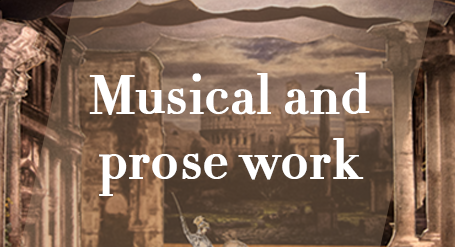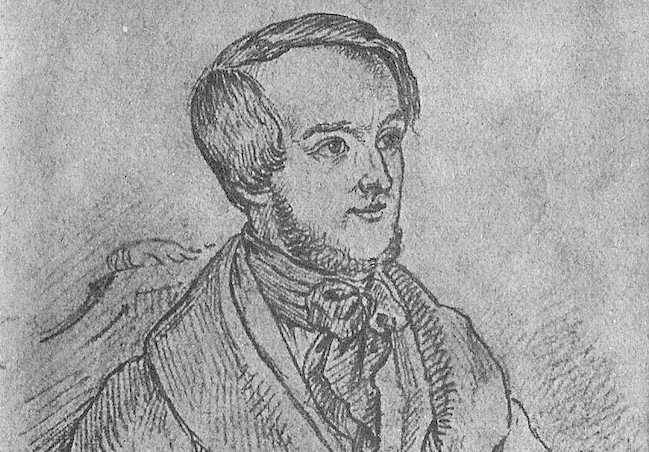
The musical work of Richard Wagner is composed of operas or “musical dramas” ranging from “Fairies” (Die Feen) to “Parsifal”. A detailed presentation of each of these major works is associated here with a set of thematic articles, placing them not only in the context of his personal life but also in his social, economic and cultural context. This section also includes all the musical works (excluding opera) and his literary work.
THE WEDDING, WWV31
Die Hochzeit, WWV31
In short
Die Hochzeit (The Wedding, WWV 31) is an unfinished opera by Richard Wagner which predates his completed works in the genre. Wagner completed the libretto, then started composing the music in the second half of 1832 when he was just nineteen. He abandoned the project after his sister Rosalie, who was the main supporter and the spokesman of the family, expressed her disgust at the story. Wagner destroyed the libretto.
In his twentieth year, Richard Wagner began his first attempt in opera with The Wedding (Die Hochzeit) whose text he wrote himself, as he would always do thereafter, and began the composition of the first act. The complete libretto was written in Bohemia, Pravonin and Prague in the autumn of 1832 and the musical part in Leipzig during the following winter.
In his autobiography (Mein Leben/My Life), he very precisely summarizes the work’s framework as well as the reason that led him to give up continuing it.
“Two great houses had lived in enmity, and had at last decided to end the family feud. The aged head of one of these houses invited the son of his former enemy to the wedding of his daughter with one of his faithful partisans. The wedding feast is thus used as an opportunity for reconciling the two families. Whilst the guests are full of the suspicion and fear of treachery, their young leader falls violently in love with the bride of his newly found ally.
His tragic glance deeply affects her ; the festive escort accompanies her to the bridal chamber, where she is to await her beloved ; leaning against her tower-window she sees the same passionate eyes fixed on her, and realises that she is face to face with a tragedy.
When he penetrates into her chamber, and embraces her with frantic passion, she pushes him backwards towards the balcony, and throws him over the parapet into the abyss, from whence his mutilated remains are dragged by his companions. They at once arm themselves against the presumed treachery, and call for vengeance; tumult and confusion fill the courtyard: the interrupted wedding feast threatens to end in a night of slaughter. The venerable head of the house at last succeeds in averting the catastrophe. Messengers are sent to bear the tidings of the mysterious calamity to the relatives of the victim: the corpse itself shall be the medium of reconciliation, for, in the presence of the different generations of the suspected family, Providence itself shall decide which of its members has been guilty of treason. During the preparations for the obsequies the bride shows signs of approaching madness ; she flies from her bridegroom, refuses to be united to him, and locks herself up in her tower-chamber.
Only when, at night, the gloomy though gorgeous ceremony commences, does she appear at the head of her women to be present at the burial service, the gruesome solemnity of which is interrupted by the news of the approach of hostile forces and then by the armed attack of the kinsmen of the murdered man. When the avengers of the presumed treachery penetrate into the chapel and call upon the murderer to declare himself, the horrified lord of the manor points towards his daughter who, turning away from her bridegroom, falls lifeless by the coffin of her victim.
This nocturnal drama, through, which ran reminiscences of Leubald and Adelaïde (the work of my far-off boyhood), I wrote in the darkest vein, but in a more polished and more noble style, disdaining all light-effects, and especially all operatic embellishments. Tender passages occured here and there all the same, and Weinlich, to whom I had already shown the beginning of my work on my return to Leipzig, praised me for the clearness and good vocal quality of the introduction I had composed to the first act; this was an Adagio for a vocal septette, in which I had tried to express the reconciliation of the hostile families, together with the emotions of the wedded couple and the sinister passion of the secret lover.
My principal object was, all the same, to win my sister Rosalie’s approval. My poem, however, didn’t find favour in her eyes : she missed all that which I purposely avoided, insisted on the ornamentation and development of the simple situation, and desired more brightness generally. I made up my mind in an instant: I took the manuscript, and without a suggestion of ill-temper, destroyed it there and then.”
In reality, what Wagner destroyed was only the libretto, and not the part whose music he had composed, and that had pleased his master Weinlig. He offered its score to the Musikverein in Würzburg in 1833 when he was choirmaster in this city’s theatre .
It is not known if this music was then executed. These fragments form two scenes with an introduction, a chorus and a septet. It should be noted that the French translation of the corresponding text was published by Philippe Godefroid in Les Opéras imaginaires (The imaginary Operas).
The introduction represents the reception at Ada and Arindal’s impending wedding of the guests who are Cadolt, the former enemy’s son, and his equerry. The chorus that follows salutes the married couple’s bridal procession while Cadolt is overcome with passion and amazement at the sight of the bride. The septet unites Ada and Arindal, the spouses; Cadolt and his equerry Admund; Lora, Ada’s companion; King Hadmar, Ada’s father, and his seneschal Harald. It is curious to note that certain of these characters’ names would be taken up by Wagner in his first completed opera, The Fairies.
In 1879, the Würzburg Music Society having been dissolved, the manuscript was offered for sale. Wagner sought to get it back, but the asking price seemed too high to him; he then began a trial that he lost. Later, the manuscript was bought by Mrs. Burrell. The score was published in 1912, but hardly attracted interest except curiosity. It is interesting to note that the first theatrical performance occurred in Rostock in 1933, followed by another one in Leipzig in 1938. To our knowledge, there is only one recording made in England about forty years ago, with only the introduction with chorus without the septet.
If you wish to share further information about this article, please feel free to contact us !
